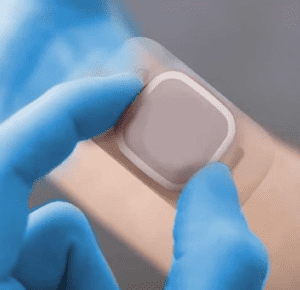Introduction
Microplates are essential in laboratory research, allowing for precise tests and analyses that demand meticulous sample handling. An important aspect to ensuring the accuracy of these tests is selecting the right sealing film, which can significantly affect the success of an experiment. Sealing films serve several functions, including preventing evaporation, contamination control and preserving sample integrity. Given the critical nature of these functions, it is important to have a deep understanding of the various types of sealing films available.
Types of Microplate Sealing Films
When it comes to microplate sealing films, understanding the properties of each material is crucial for optimizing your specific laboratory applications. The most commonly used materials include polyester, polypropylene, aluminium foil and silicone. Each of these materials offer distinct benefits that support different requirements in research and testing environments.
Polyester Films are highly regarded for their exceptional thermal stability, making them particularly suitable for applications that involve heat sealing or thermal cycling, such as PCR (Polymerase Chain Reaction) and qPCR (quantitative PCR) assays. Polyester’s ability to withstand fluctuating temperatures ensures consistent performance, especially in demanding environments. Additionally, polyester films have high chemical resistance, and don’t degrade when exposed to solvents or reagents. Another significant advantage they offer is transparency. Being see-through allows for easy visual inspection of samples and ensures compatibility with plate readers used in fluorescence and luminescence readings. For these reasons, polyester films are a versatile choice for a broad range of molecular biology applications.
Polypropylene Films have a high level of flexibility, allowing them to conform to uneven surfaces easily. This flexibility is useful when microplate wells are uneven or where even slight irregularities exist. In addition to flexibility, polypropylene films can be pierced easily by pipette tips or robotic probes. This means samples can be accessed without needing to remove the film. This feature is useful in high-throughput environments where maintaining sterility and preventing contamination are critical. Polypropylene is also compatible with a wide range of chemical reagents and this, coupled with its ability to withstand low-temperature conditions, make it ideal for ELISA assays and for storing samples in cryogenic conditions.
Aluminum Foil Films stand out for their heat resistance, making them a good choice for applications involving high temperatures, like autoclaving or thermal cycling. By forming a barrier against moisture and gas, they can maintain the integrity of samples over extended periods. Unlike polyester films however, they are completely opaque which provides protection for light-sensitive samples. This ensures that exposure to light doesn’t compromise the accuracy of the results. These unique properties make aluminum foil films a good choice for applications requiring long-term preservation and protection from light.
Silicone Films are known for their resealability, which is a significant advantage in applications that require repeated access to the microplate wells. Unlike other materials, silicone films can be resealed multiple times without the seal being degraded. This property makes them ideal for high-throughput screening, where repeated sample access is required. Furthermore, silicone’s flexibility and biocompatibility make it ideal for cell culture applications requiring gas exchange. These properties ensure that cells are maintained in an optimal environment throughout the experiment, supporting their health and growth.
Specialized Materials
While polyester, polypropylene, aluminium foil and silicone are the most common materials used in microplate sealing films, other specialized materials are also available, offering unique benefits for specific applications. One such material is Polyolefin, known for its chemical resistance and low moisture absorption. Polyolefin is used for in applications with aggressive reagents. Another example is Polycarbonate, which is transparent, and preferred in applications requiring a high degree of sample visibility.
Design Considerations for Microplate Sealing Films
Beyond material selection, several design aspects are crucial for optimal sealing film performance:
Adhesive Type: Films with pressure-sensitive adhesives offer a moderate bond and are removable without residue, ideal for temporary sealing. Heat-sealable adhesives provide a more permanent bond and are suitable for applications needing a secure seal during thermal cycling.
Pierceability: Films that allow easy piercing, without removing the seal, are essential for maintaining sterility and avoiding contamination during repeated access.
Seal Integrity: In high-pressure environments, such as during centrifugation, a film with high seal integrity is crucial in preventing leakage and contamination.
Transparency: For techniques such as spectrophotometry, fluorescence or luminescence readings, transparent films are necessary for accurate data collection.
Ease of Application and Removal: Films that simplify application and removal are important for automating tasks and reducing manual handling, streamlining the overall workflow.
Conclusion
Selecting the right microplate sealing film is a critical decision that requires an understanding of the material properties as well as the design features that best suit your application. Whether you’re conducting sensitive biochemical assays, storing samples for long periods or performing high-throughput screening, having the right sealing film will positively impact the accuracy and efficiency of your work.








